Best beginner electric guitars 2025: Empower your guitar journey with our pick of guitars for fresh-faced rookies
From Squier to Ibanez, here's our expert selection of the best electric guitars for beginners

If you’re looking to plug in and begin your six-string journey, then there’s nothing better to equip yourself with than one of the best beginner electric guitars. Having something sturdy and reliable that plays well, stays in tune and sounds good is crucial to making your first steps as a player easy and enjoyable.
There are loads of options out there, some great and some less so, so how do you know which are the best beginner electric guitars? Well, we’ve put together our pick of the bunch, accounting for different styles and budgets.
When you’re starting out, a good beginner guitar is so important - you’ll remember it forever, and it could well lead to great things. So, congratulations on taking the first step, and read on to discover the best beginner electric guitars currently on the market.
The quick list
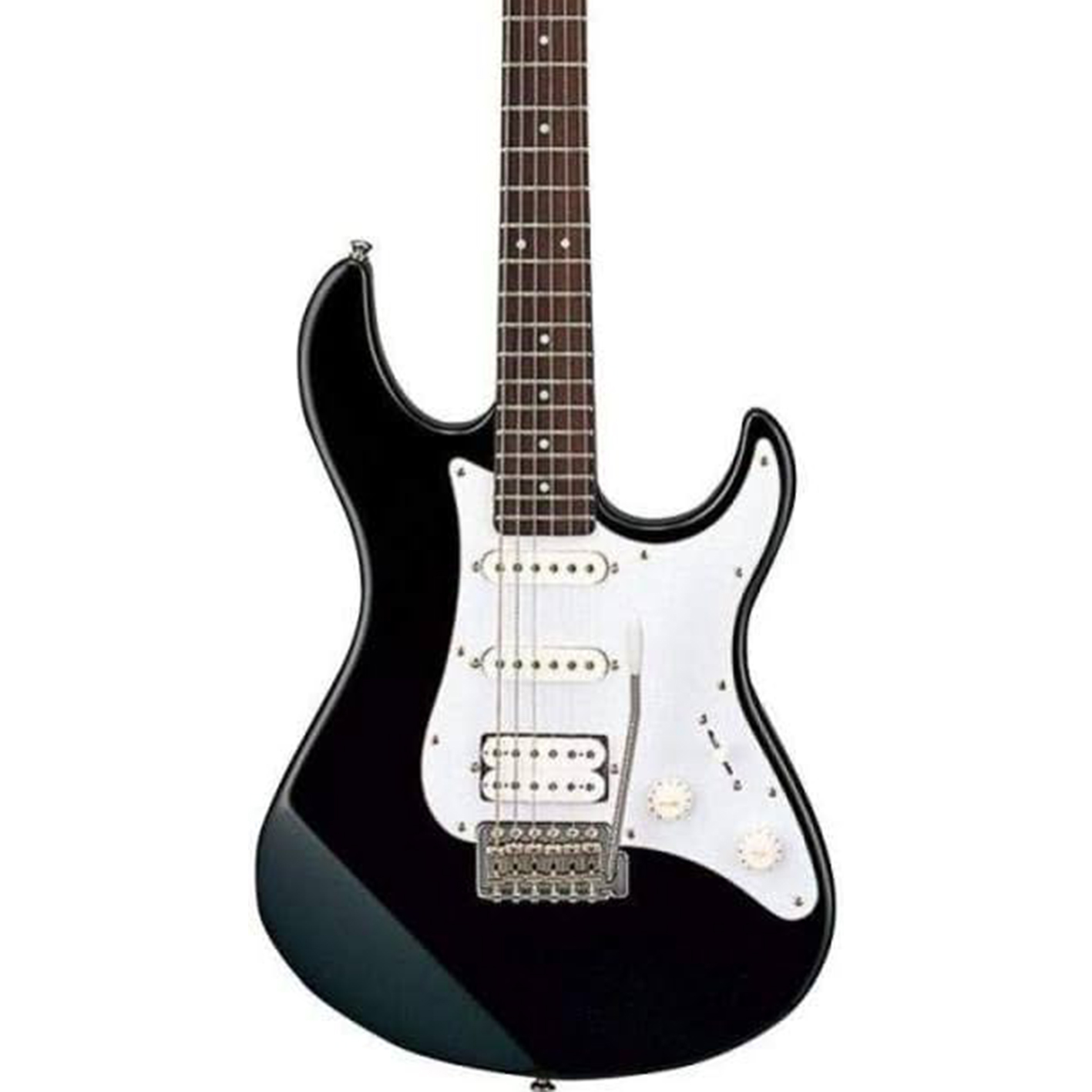
The HSS configuration of this Yamaha is a beginner's favorite, with the humbucker in the bridge delivering a punch that countless novice guitarists have enjoyed experimenting with over the decades. The single coils offer a spanky clarity and, when combined with the humbucker, coverig a wide sonic palette, providing all the tones any learner may potentially need.
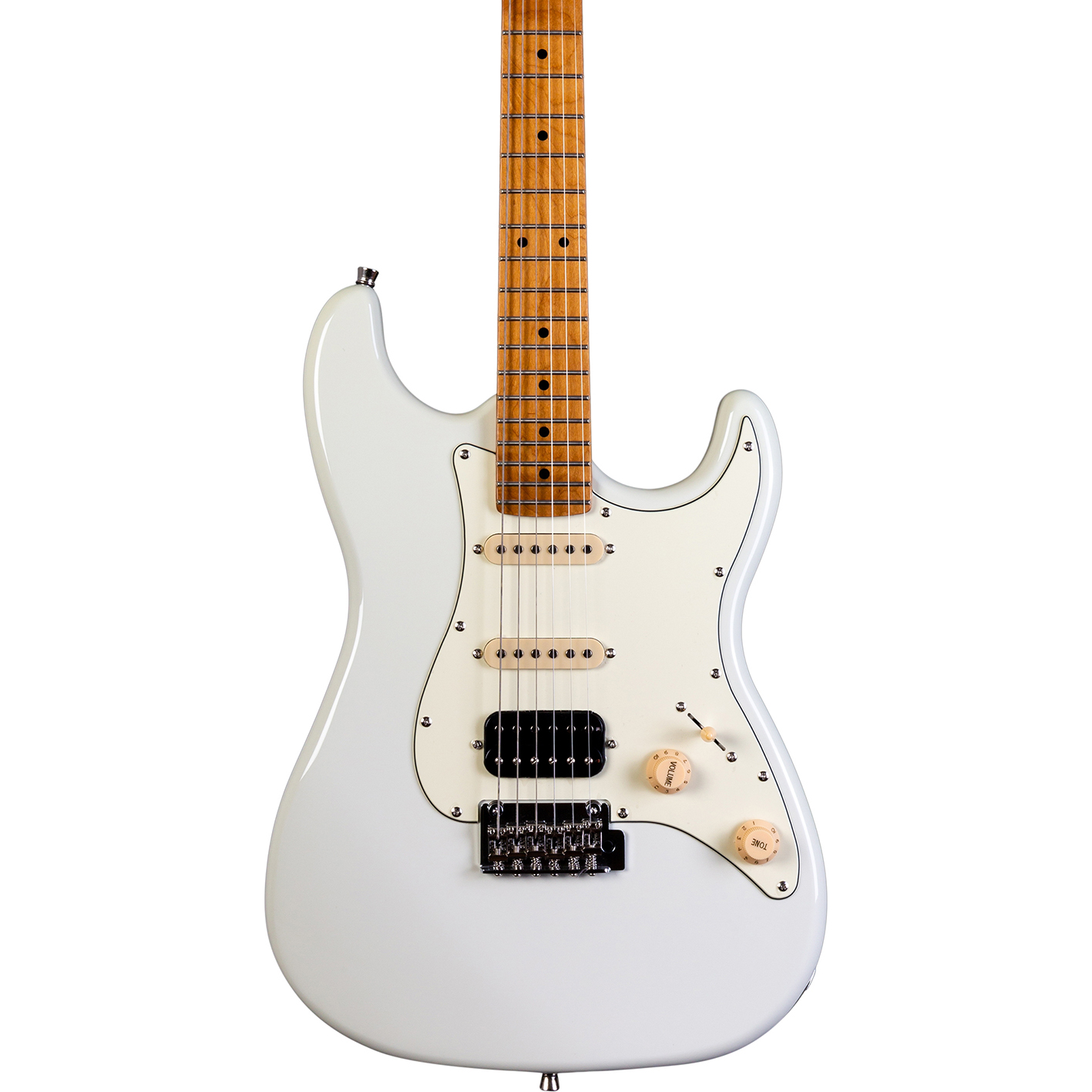
The JS-400 captures the essence of the Stratocaster, featuring similar body contours and double-horned design. This makes the JS-400 feel very comfortable to play, ensuring an easy ride whether you're playing seated or standing and when navigating the higher frets. Learning guitar can be awkward at the best of times, so the comfier the better.
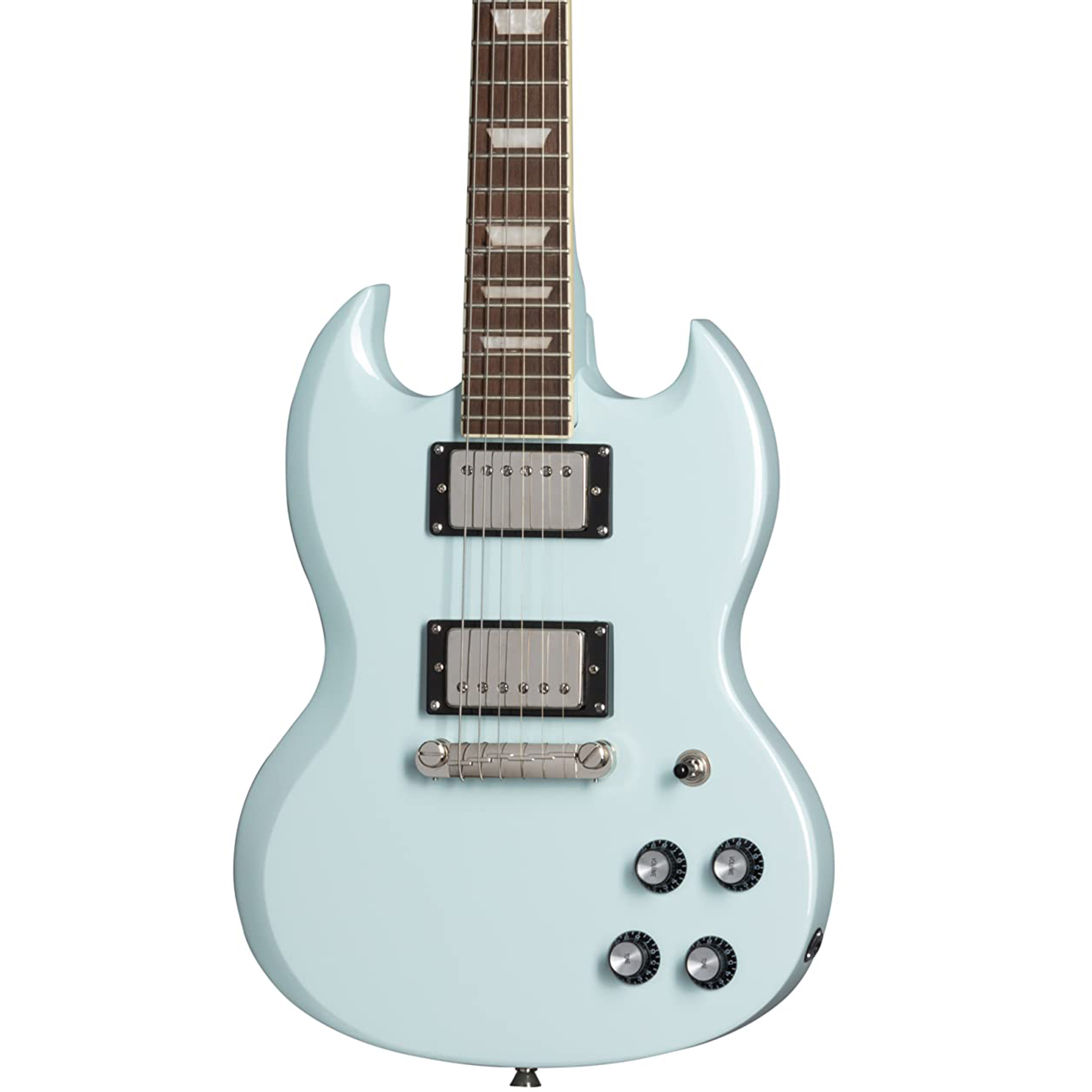
Offering kids the opportunity to fulfill their rock hero dreams, the Power Players SG is a short scale, small body electric guitar that has been built to withstand even the most raucous guitar practice. With a pair of Epiphone humbuckers, this dinky SG packs plenty of bark that will impress even experienced players.
Best overall
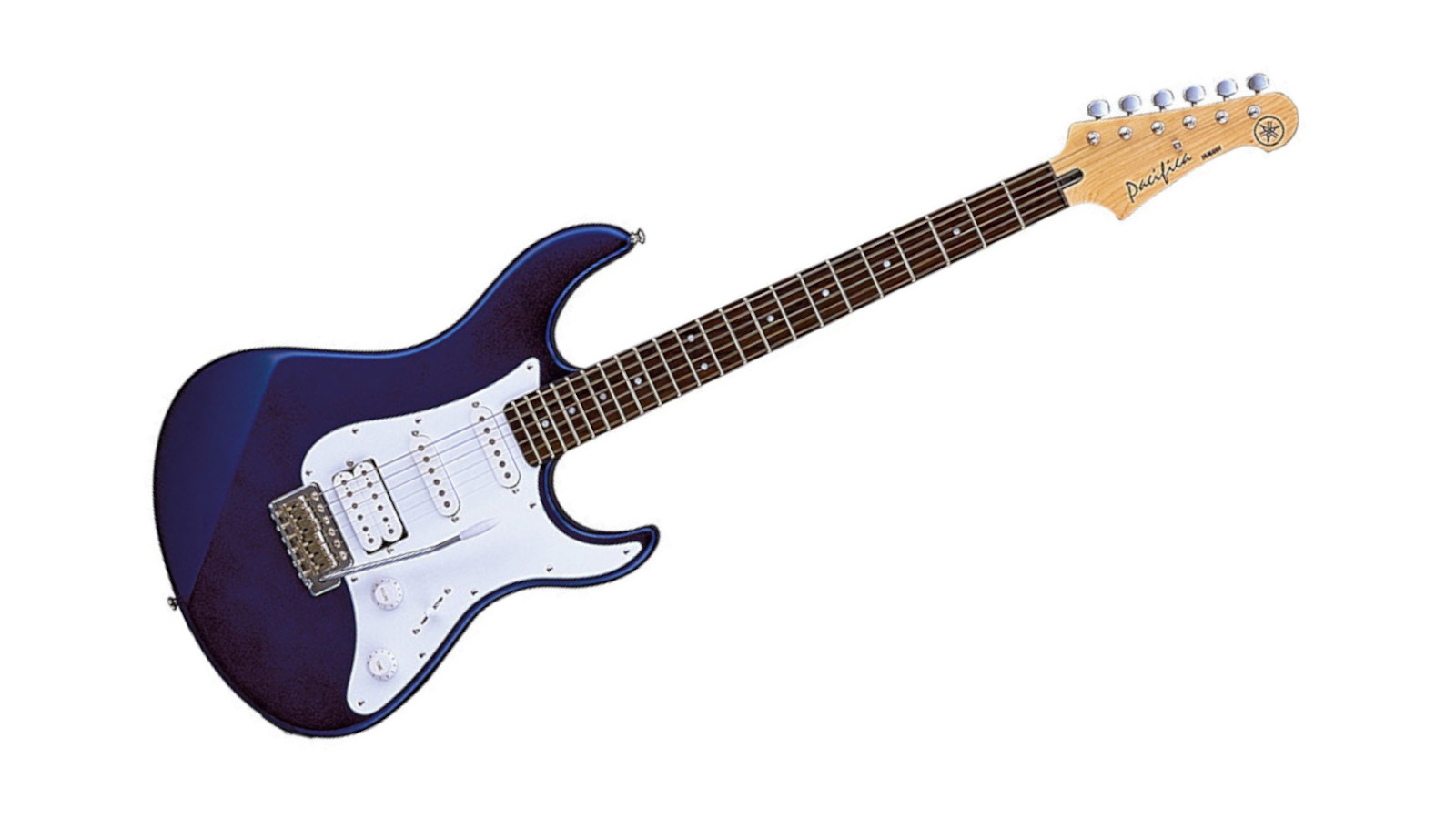
1. Yamaha Pacifica 012
Our expert review:
Specifications
Reasons to buy
Reasons to avoid
For over 30 years, the Yamaha Pacifica has been the go-to model for beginners looking to try their hand at the electric guitar. Offering Yamaha’s exceptional build quality using durable materials, the Pacifica 012 is built to last, ideal for any potentially clumsy beginners that may be a tad heavy-handed. The Pacifica’s Strat-style body is comfortable, thanks to a few well-placed contours, and in terms of playability, punches well above its price tag.
The HSS configuration is a beginner's favorite, with the humbucker in the bridge delivering a punch that countless novice guitarists have enjoyed experimenting with over the decades. The single coils offer a spanky clarity and, when combined with the humbucker, they cover a wide sonic palette, providing all the tones any learner may potentially need.
Although the Pacifica may not be the flashiest option on our list, it still offers a plethora of well-thought-out elements that add an enjoyable touch, such as the vintage style tremolo. Experimenting with a whammy bar is fundamental in any beginner's journey, and the four different finish options offer enough variety to keep most people happy.
Best budget
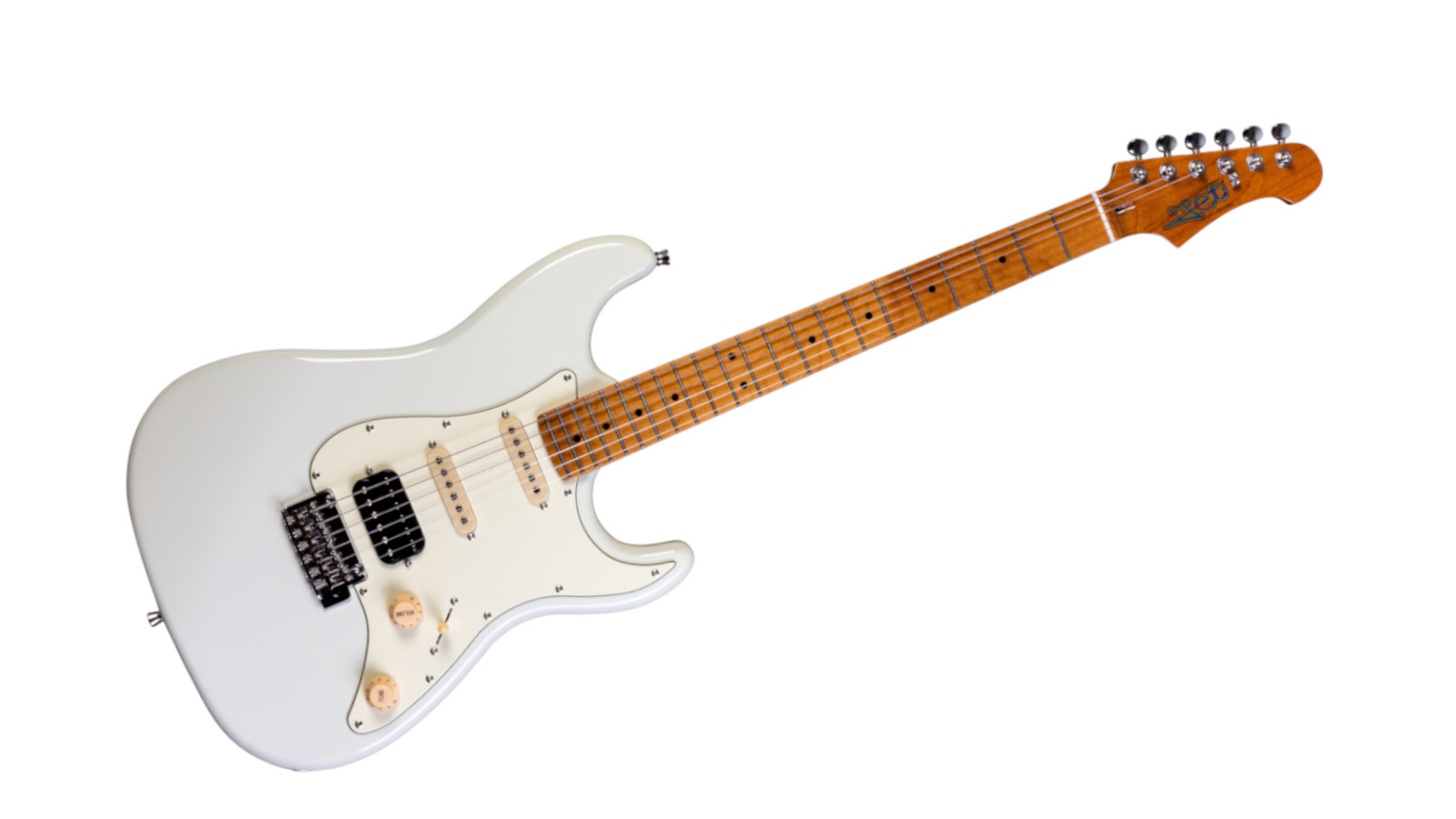
2. Jet JS-400
Our expert review:
Specifications
Reasons to buy
Reasons to avoid
While electric guitars from competitors in this price range typically offer a more barebone aesthetic, the Jet Guitars JS-400 delivers all the attractive details you'd expect from guitars at twice its price.
Designed by Primoz Virant, the JS-400 features a Canadian roasted maple neck and either a roasted maple or rosewood fingerboard, depending on the finish. Not only does the neck feel silky smooth and offer fantastic stability, it adds a premium aesthetic that makes it stand out. Looks matter. We believe a visually appealing guitar can inspire more playtime, which is key when you're learning. The modern C neck profile strikes the perfect ‘Goldilocks’ balance – not too thin or thick – offering a comfortable starting point for hands new to guitar playing.
The JS-400 captures the essence of the Stratocaster, featuring similar body contours and double-horned design. This makes the JS-400 feel very comfortable to play, ensuring an easy ride whether you're playing seated or standing and when navigating the higher frets. Learning guitar can be awkward at the best of times, so the comfier the better.
The HSS configuration is ideal for beginners, giving you ultimate versatility and will show you the characteristics of each pickup type, allowing you to decide what works best for your tastes. With a kaleidoscope of vibrant finishes, Jet Guitars are causing quite a stir in the world of beginner electric guitars, rightfully attracting attention left, right and center.
Best for kids
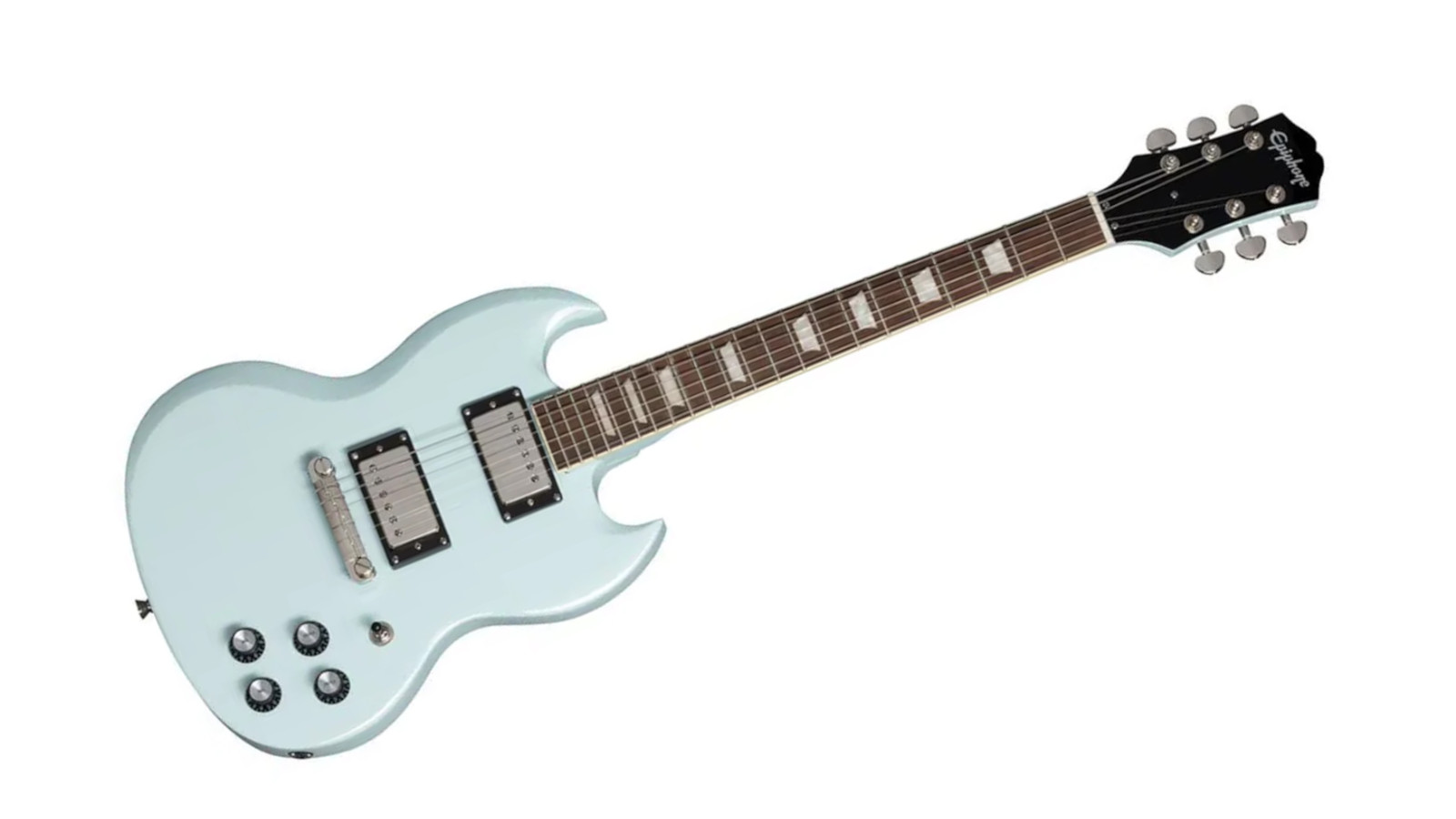
3. Epiphone Power Players SG
Our expert review:
Specifications
Reasons to buy
Reasons to avoid
With an eye on the younger market, Epiphone released its Power Players range. Offering kids the opportunity to fulfill their rock hero dreams, the Power Players SG is a short scale, small body electric guitar that has been built to withstand even the most raucous guitar practice. With a pair of Epiphone humbuckers, this dinky SG packs plenty of bark that will impress even experienced players. If your kid has shown interest in rock, blues or any other guitar-based music, this is an ideal option.
With a 22.7” scale length, the Power Players SG is considered a three-quarter sized guitar. Whilst learning chord shapes, scales or riffs, those with smaller hands will find things a lot easier due to the frets being a little closer together. The synonymous double-horned SG shape and sculpted heel allows easy access to those upper frets, making Sweet Child O' Mine a lot easier to reach. With a smaller body, the Power Players SG is pretty lightweight, and all of these qualities together make it a brilliant tool for smaller learners.
Epiphone supplies all necessary accessories for guitar lessons; a gigbag, picks, straps and guitar cable. Since Epiphone has made a conscious decision to use good quality materials, tuning stability isn’t an issue, something a guitar teacher is likely to thank you for. Lastly, if the SG isn’t your young rocker's style, there is also a Power Players Les Paul on offer in the same finishes.
Best for versatility
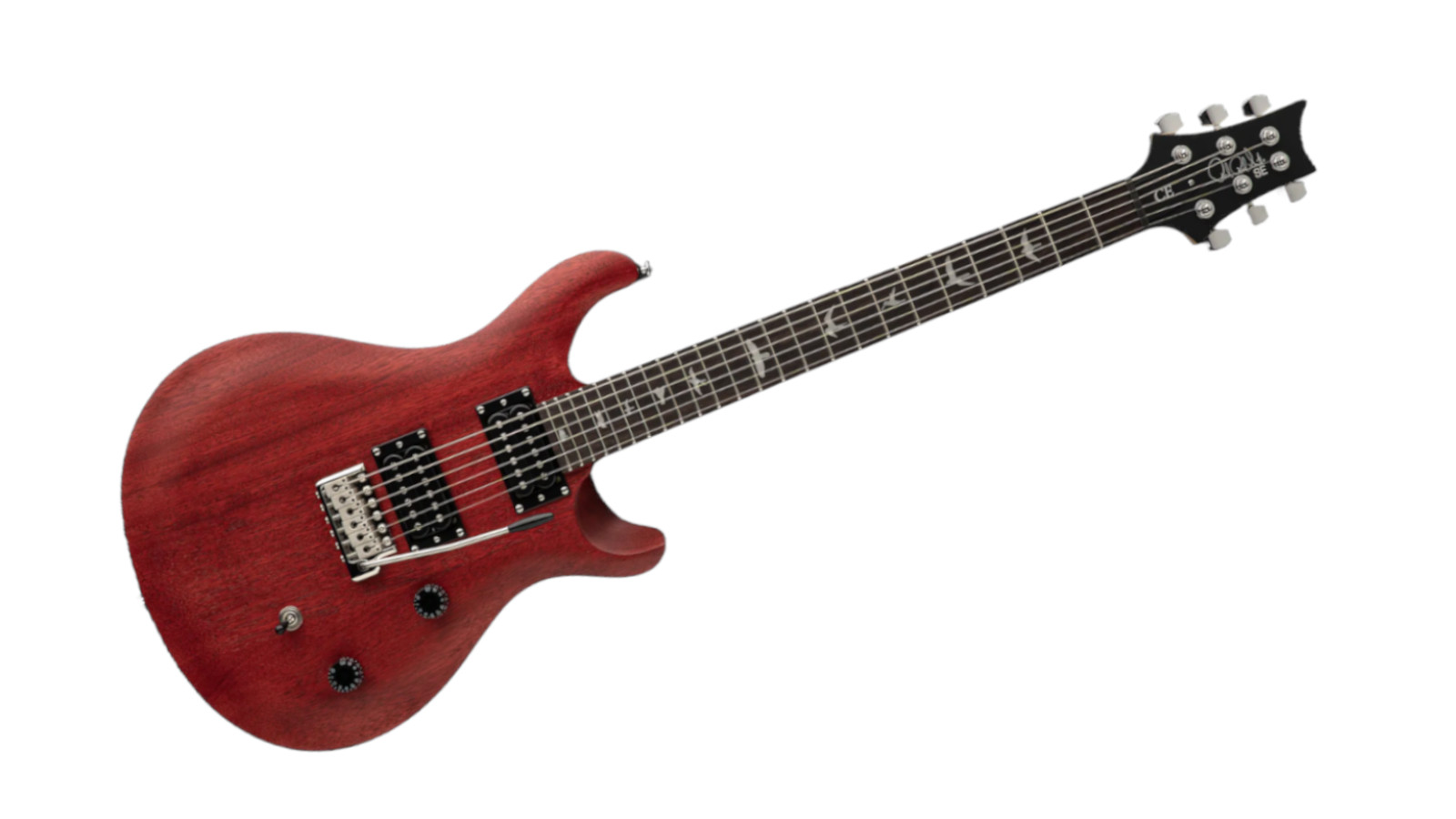
4. PRS SE CE 24 Standard Satin
Our expert review:
Specifications
Reasons to buy
Reasons to avoid
While PRS is renowned for its lavish high-end American-made models, it's the SE range that truly shines for beginners. With PRS, you can expect top-notch reliability, incredibly smooth playability and a wide range of tones. And we're thrilled to confirm that the brand new SE CE 24 Standard Satin lives up to this reputation without exception.
As PRS’ most pocket-friendly option yet, it clocks in at just under $500, making it a steal for beginners eager to dive into electric guitar territory and carry them through their journey well into intermediate playing. The '24' in the guitar's name signifies the number of frets, 24 in total. The double-cutaway design makes it a breeze to reach the higher frets, especially with the lower horn carved out for extra access when you get around to exploring the neck's upper end. The guitar’s top is also carved and sports a smooth satin finish, making the overall experience very comfortable.
PRS’ own 85/15 “S” humbuckers grace this guitar, offering an affordable option inspired by pickups found in its high-end American models. These humbuckers are warm and punchy, and the coil split found in the tone control opens up even more tones that a beginner will love exploring. Although the SE CE 24 Standard Satin offers great value, PRS still chucks in a gigbag for good luck, so there’s a lot to love with this deal.
Best offset
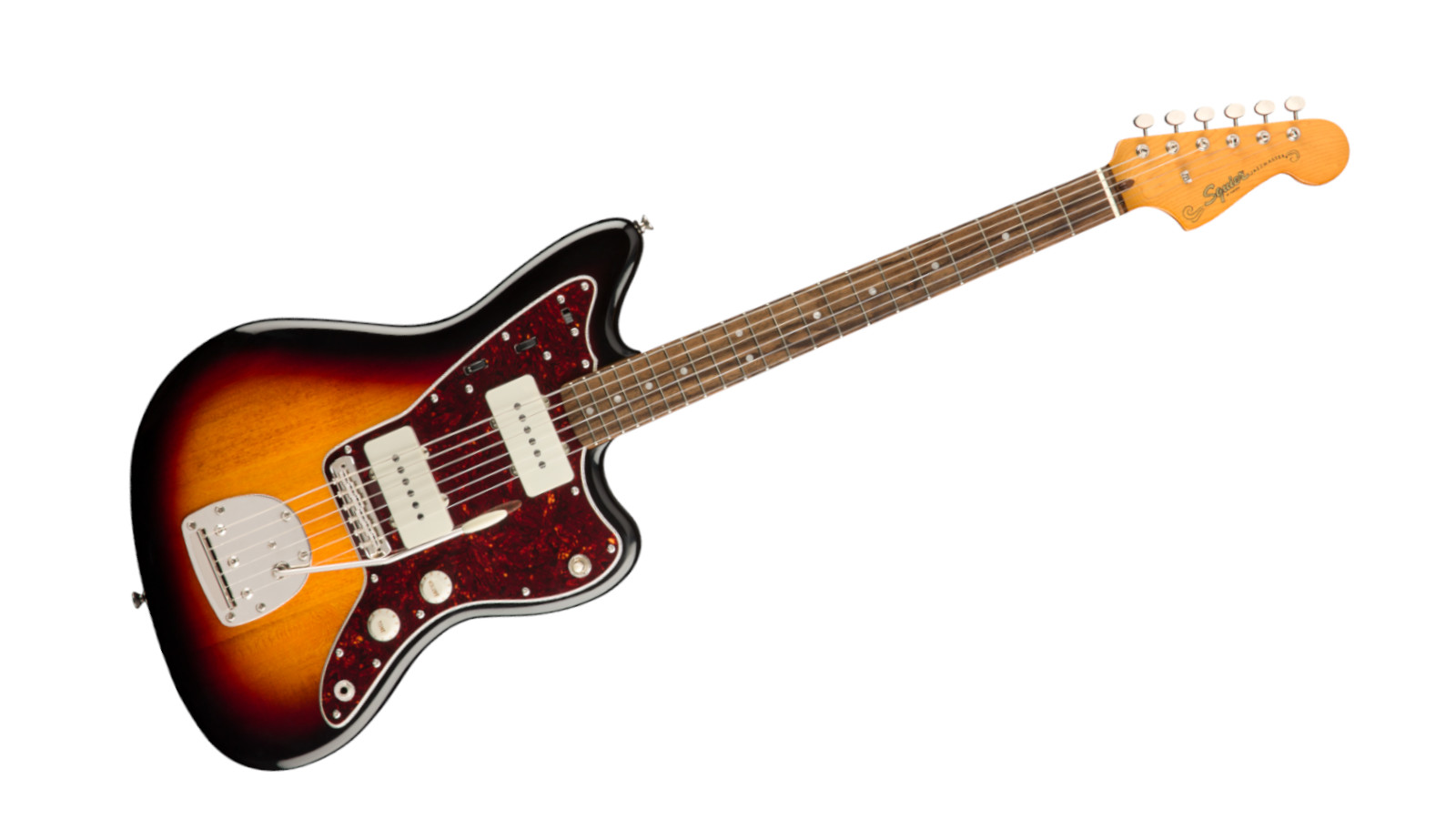
5. Squier Classic Vibe ‘60s Jazzmaster
Our expert review:
Specifications
Reasons to buy
Reasons to avoid
Squier is one of the best in the business for beginner electric guitars. Owned and operated by Fender, Squier has free rein to create wallet-friendly classic electric guitar designs ideally suited for those at the start of their learning journey. Squier’s Classic Vibe series sits near the top of the brand’s range and for the aspiring shoegazers there isn’t a better beginner option than this Classic Vibe ‘60s Jazzmaster.
Squier has incorporated plenty of features that will make a beginner feel right at home. The universally beloved C-shaped neck profile feels comfortable and sits in your palm without being overly obtuse. Paired with the 9.5”-radius fingerboard and thanks to the narrow-tall frets, beginners will breeze through string bends when they reach that stage in their learning journey. Furthermore, Squier has equipped this Jazzmaster with two fantastic sounding Fender-designed alnico single coils, ensuring beginners feel instantly satisfied when plugging this bad boy into an amplifier. The quality of components here really hits the mark.
The Jazzmaster is an offset guitar, meaning its waist is asymmetrical. Now, although this may sound a little awkward, it’s actually very well-balanced, especially whilst playing sitting down, so don’t let that dissuade you. Lastly, the Classic Vibe series offers a range of retro aesthetics including a tinted neck, ‘60s-inspired headstocks and nickel-plated hardware. So if you’re a beginner starting out, you don’t need to compromise on an underwhelming looking guitar.
Best for metal
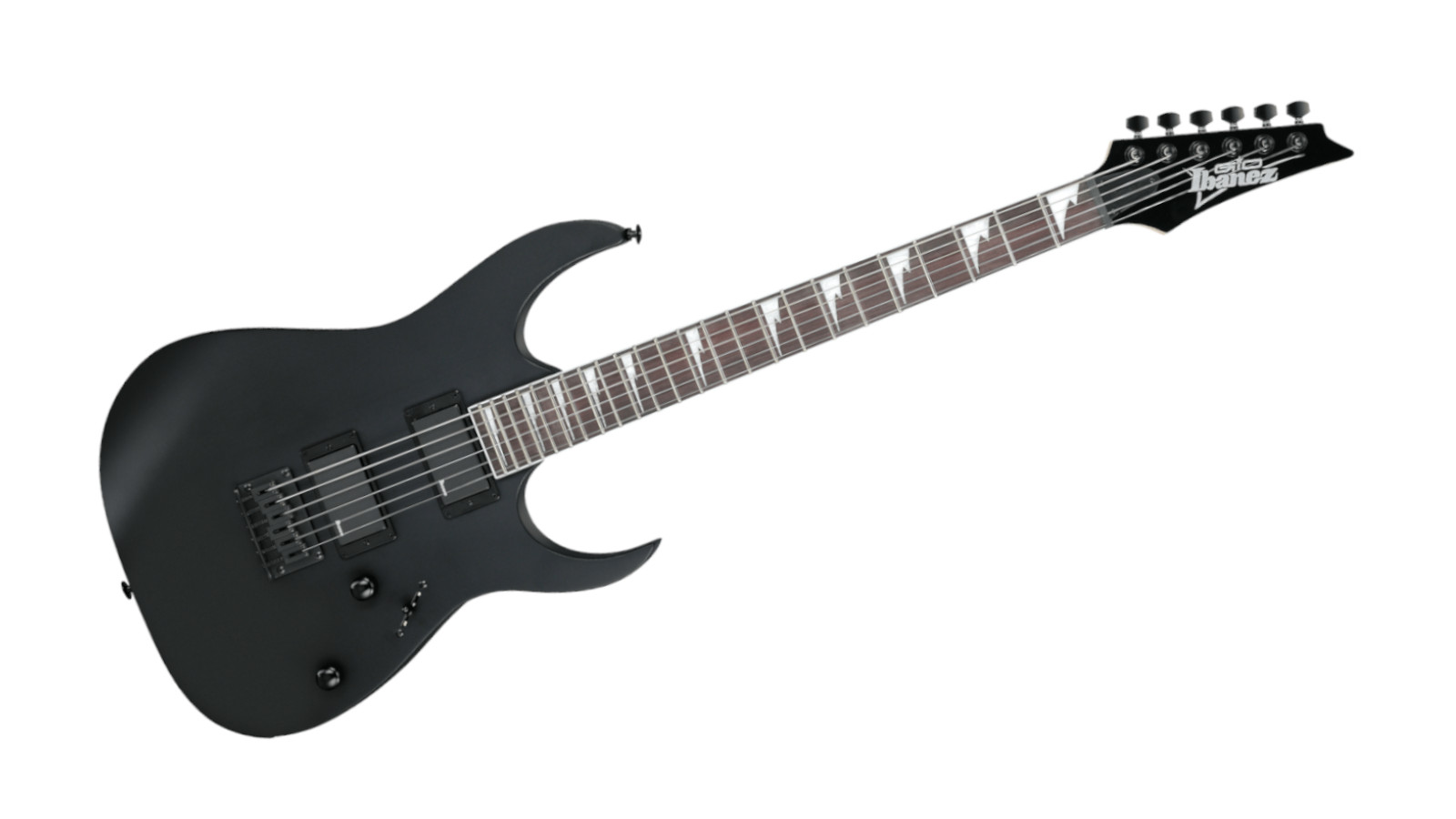
6. Ibanez GRG121DX
Our expert review:
Specifications
Reasons to buy
Reasons to avoid
Japanese brand Ibanez is well known for its sleek, fast playing electric guitars that are ideally suited to heavy music. However, with its budget-friendly GIO range, Ibanez has made itself accessible to beginners inclined in that direction. The GRG121DX, albeit a bit of a mouthful, is a novice shredder's dream, priced under $/£200 and equipped with all the necessary specs that will assist working on those gnarly chops.
The super smooth satin maple neck, 24 frets and relatively flat 16" fingerboard radius has been purposely built to assist fast shredding. Accompanying this are the two IBZ-6 humbuckers incorporated. Humbuckers, renowned for their powerful output, work well in rock and metal, and the IBZ-6s deliver a particularly meaty tone when cranked into an overdrive/crunch channel, sure to satisfy any beginner metalhead.
However, the GRG121DX isn’t a one-trick pony, as the 5-way selector switch works as a coil split. Put simply, a coil split switches off one half of the humbucker, giving you spankier single coil tones. So although this mean machine excels with heavier tunes, you can also achieve plenty of pretty jangle. Ultimately, offering plenty of versatility that will work well with a beginner who’ll be exploring different styles.
Best semi-hollow
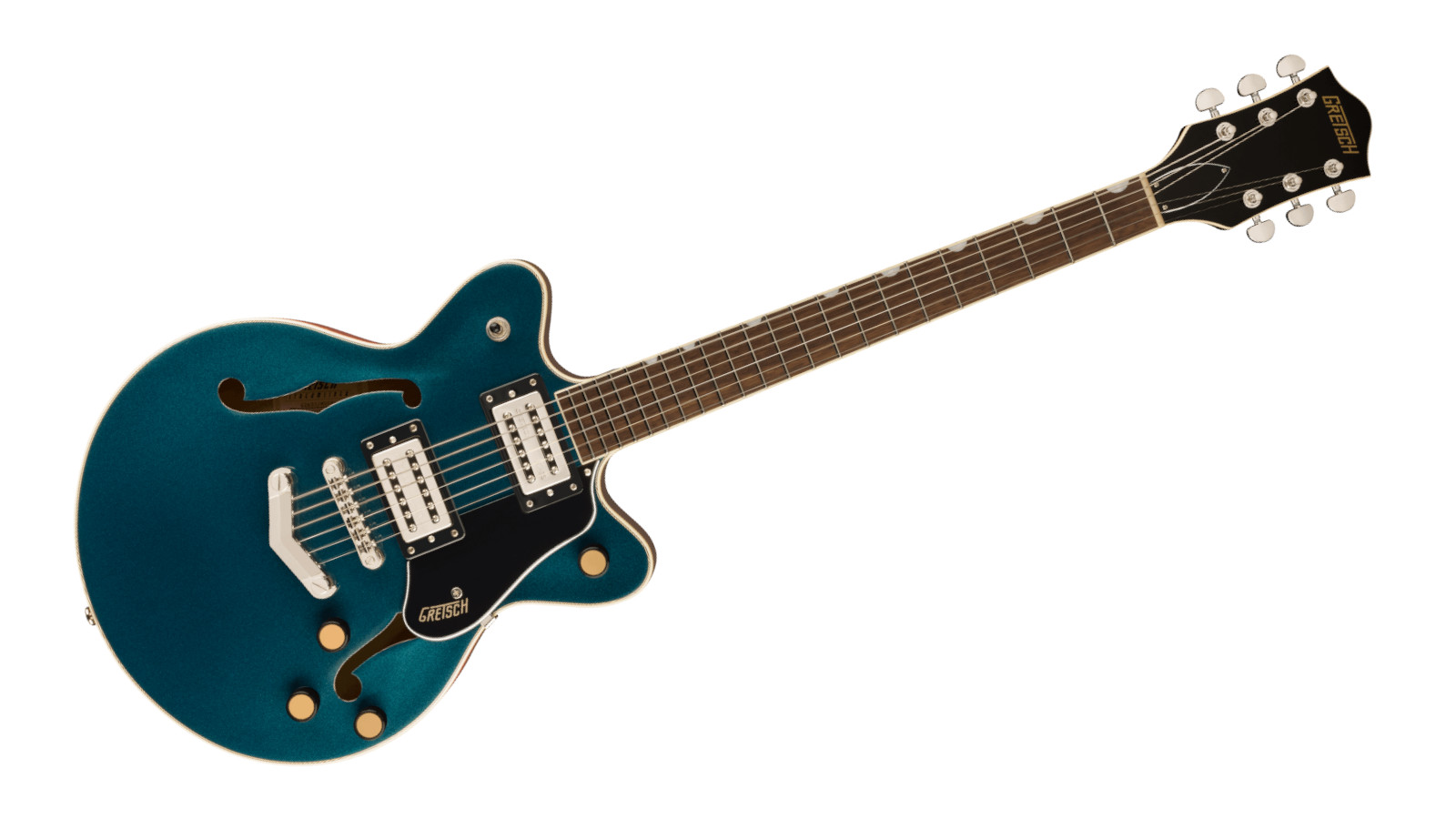
7. Gretsch G2655 Streamliner Center Block Double Cut Jr
Our expert review:
Specifications
Reasons to buy
Reasons to avoid
Gretsch is a brand with a wealth of heritage dating back to 1883. Most well known for semi and fully hollow-bodied guitars, Gretsch guitars are most commonly found in genres such as country, rockabilly or jazz. If you're a beginner and your tastes lean in that direction, then the Gretsch G2655 Center Block Double Cut Jr Streamliner may be the best beginner electric guitar for you.
The Streamliner range offers fantastic value and this G2655 Jr. is capable of a wealth of tones. The Broad'Tron BT-3S pickups are articulate and punchy and have slightly different characteristics to a traditional ‘bucker. The accompanying push/pull coil split control opens up even more enjoyable tones, and its versatility is much more diverse than the looks may suggest.
The G2655 Jr. has a small, lightweight body akin to a Strat or Les Paul. This means it will be much comfier for beginners than other Gretsch models, which can be a little bulky. The semi-hollow design features a solid center block in its body cavity. This design offers the acoustic resonance of a hollow-bodied guitar while significantly reducing amplifier feedback when plugged in, a common issue synonymous with hollow-bodied guitars.
Best lefty
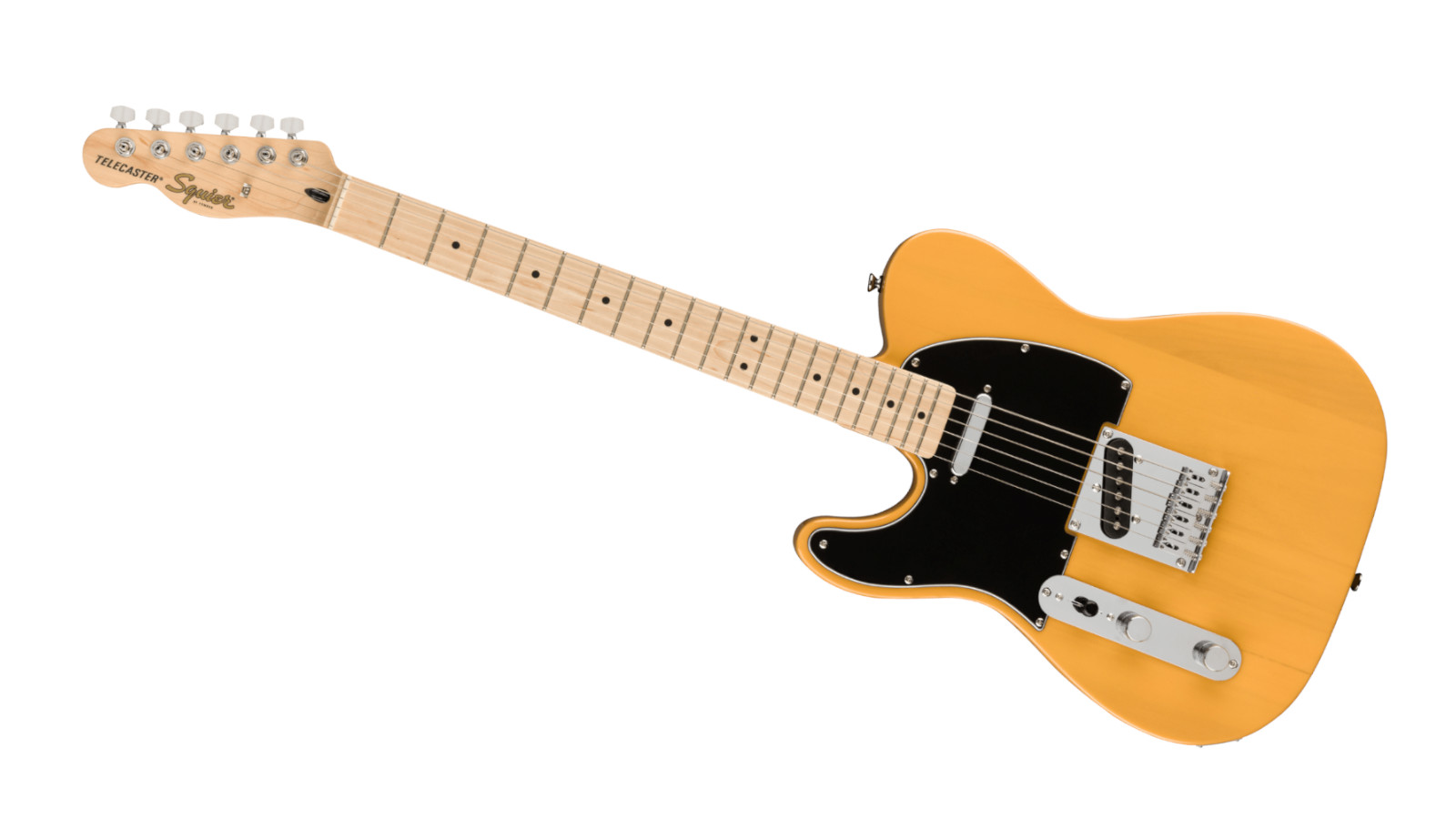
8. Squier Affinity Telecaster
Our expert review:
Specifications
Reasons to buy
Reasons to avoid
The Telecaster hasn't undergone many changes since its inception in the early 1950s. This is not due to neglect, but rather because Leo Fender's design was so ingenious that it has stood the test of time. Hailed as one of the most versatile models ever, the left-handed Squier Affinity Telecaster offers beginner guitarists incredible value for money, introducing fresh-faced players to the wonderful world of Telecasters.
With two single coil ceramic pickups, a 3-way selector switch, and a single volume and tone control, the Telecaster's straightforward layout is precisely why it's ideal for beginners. The guitar does much of the heavy lifting, and achieving great tones doesn’t require a nuclear physics degree. You’ll get twangy country tones in the bridge position to more bluesy warmth in the neck position.
As for the neck, Squier’s comfortable C-shaped profile makes playing a doddle and the satin smooth finish doesn’t make your hand stick whilst moving between chords or playing up the neck. From our tests, tuning stability has never been an issue and the hardware is robust enough for a guitar in this price range. Overall, for left-handed beginners, the Affinity Telecaster is a no frills option that will help you achieve your electric guitar goals.
Best P-90 model
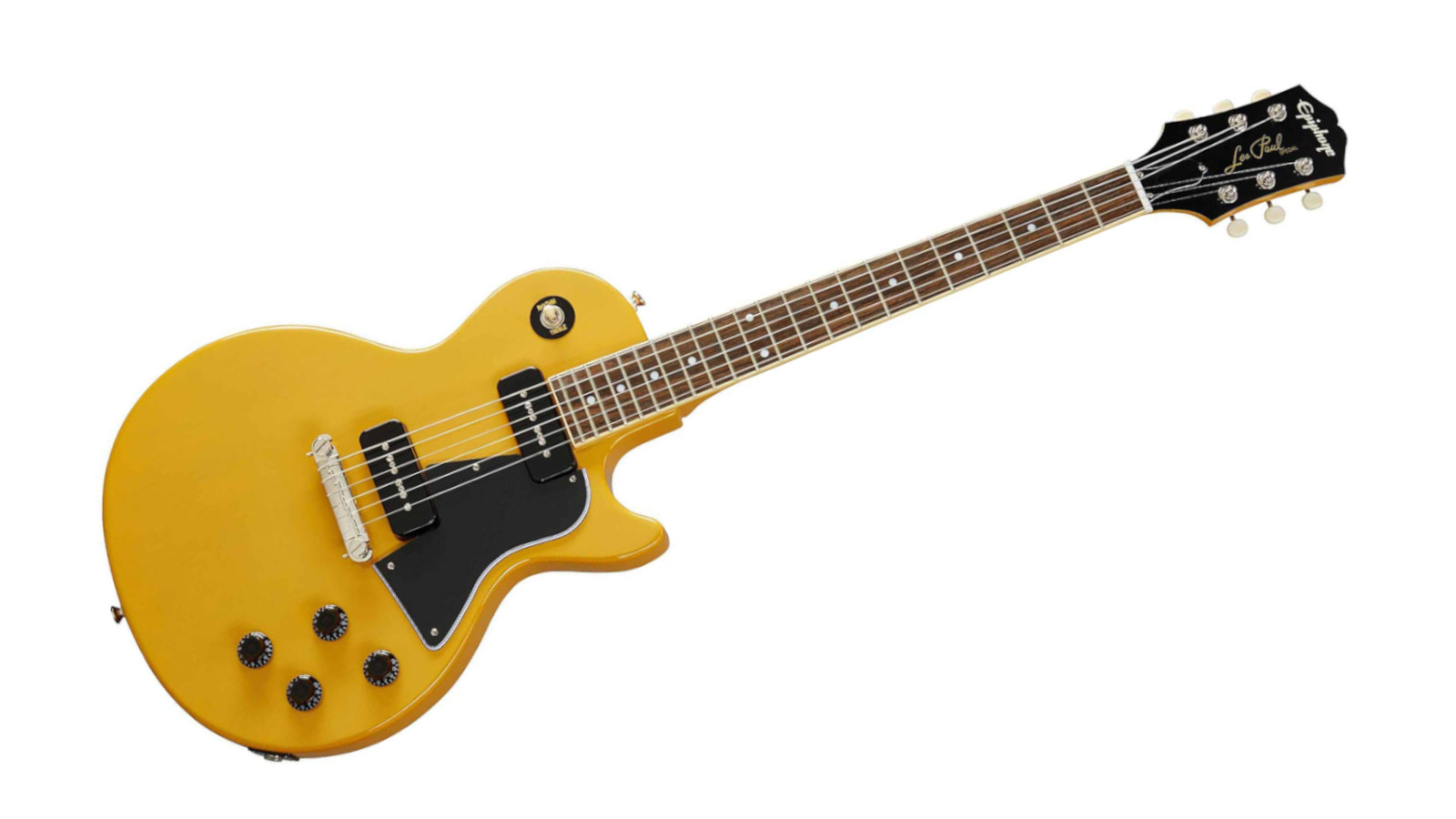
9. Epiphone Les Paul Special
Our expert review:
Specifications
Reasons to buy
Reasons to avoid
The Les Paul Special has long been the top pick for punk rockers throughout the decades. In the grubby nightclubs of London, the Godfather of punk, Steve Jones, was known to wield a Special while performing with the Sex Pistols. Epiphone, renowned for its affordable alternatives to pricier American-made Gibson guitars, has truly knocked it out of the park with this Les Paul Special in eye-catching TV Yellow.
Firstly, the bark and clarity of the P-90 PRO Soap Bar pickups works well for intense, fast music that’s a little rough around the edges. However, the Special isn’t a one-trick pony. Cycling through the pickup positions towards the neck reveals the guitar's versatile palette of tones, making it great for blues, indie and classic rock.
Unlike the Les Paul Standard, with its carved maple top adding weight and potentially feeling bulky for beginners, the Special's flat top makes it significantly lighter and more agile. Despite the TV Yellow's eye-catching nature not being everyone's personal style, we can't take our eyes off it – it really pops in the flesh.
Best reliability
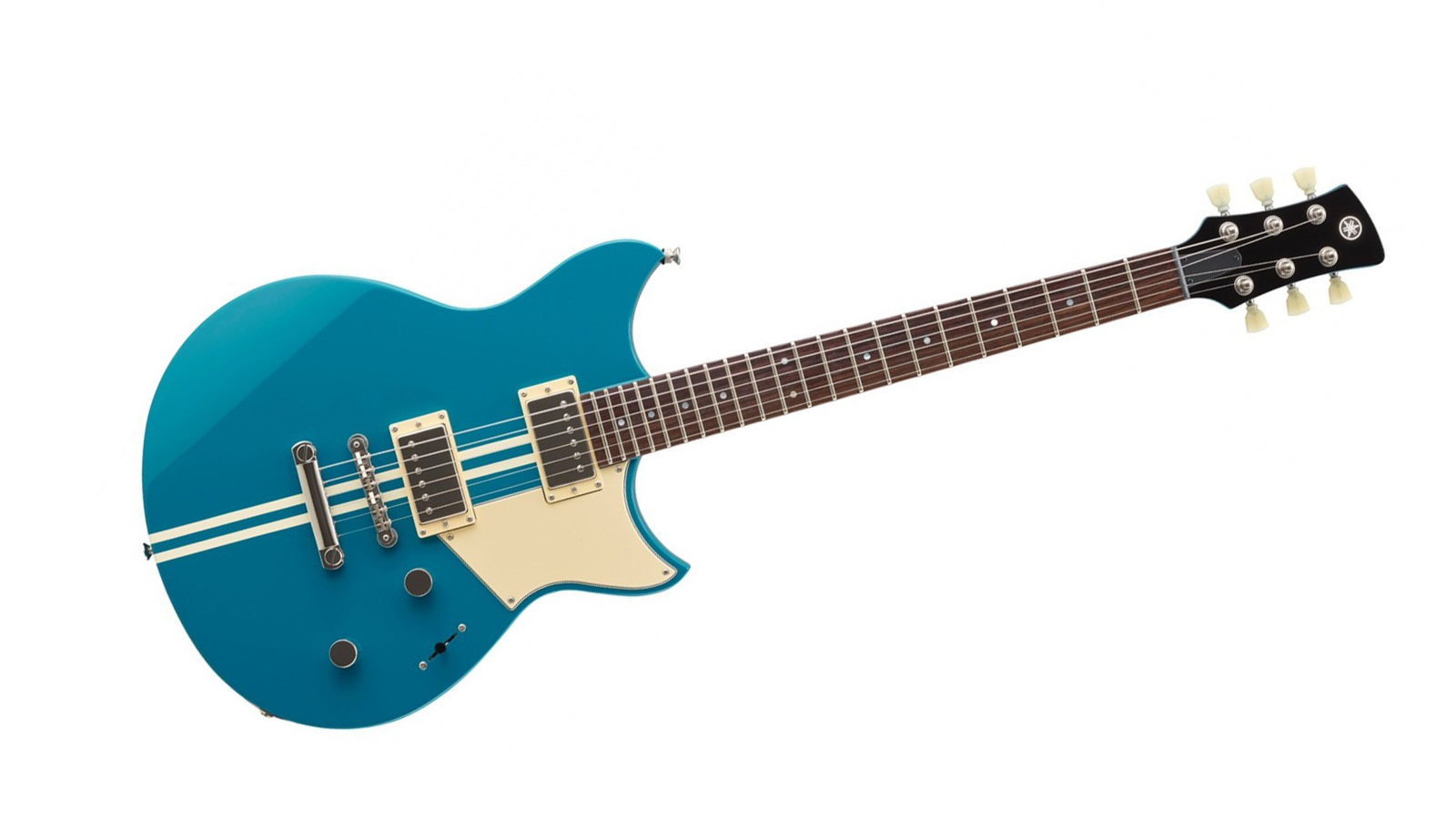
10. Yamaha Revstar Element RSE20
Our expert review:
Specifications
Reasons to buy
Reasons to avoid
The Revstar series has become well known in recent years for its solid build quality, vintage styling and great playability. This new version is no different, plus Yamaha have made some improvements to it. It’s now got a chambered mahogany body which not only resonates well but it also makes it nice and light so when you make the switch to playing stood up, there isn’t too much of a weight hanging from your shoulder.
Its two humbucking pickups have got a fairly hot output making it great for rock, but it will just as easily tackle blues, jazz and many other styles. There’s also a ‘dry switch’ that enables a high pass filter giving you twangy, bright tones in an instant.
The layout is nice and simple, making it completely fuss-free for beginners. There’s a master volume and tone (this pulls up for the dry switch) and a three-way pickup selector. A comfy neck profile and 12” fretboard radius accommodate nicely for chords and string bending, too.
Buying advice
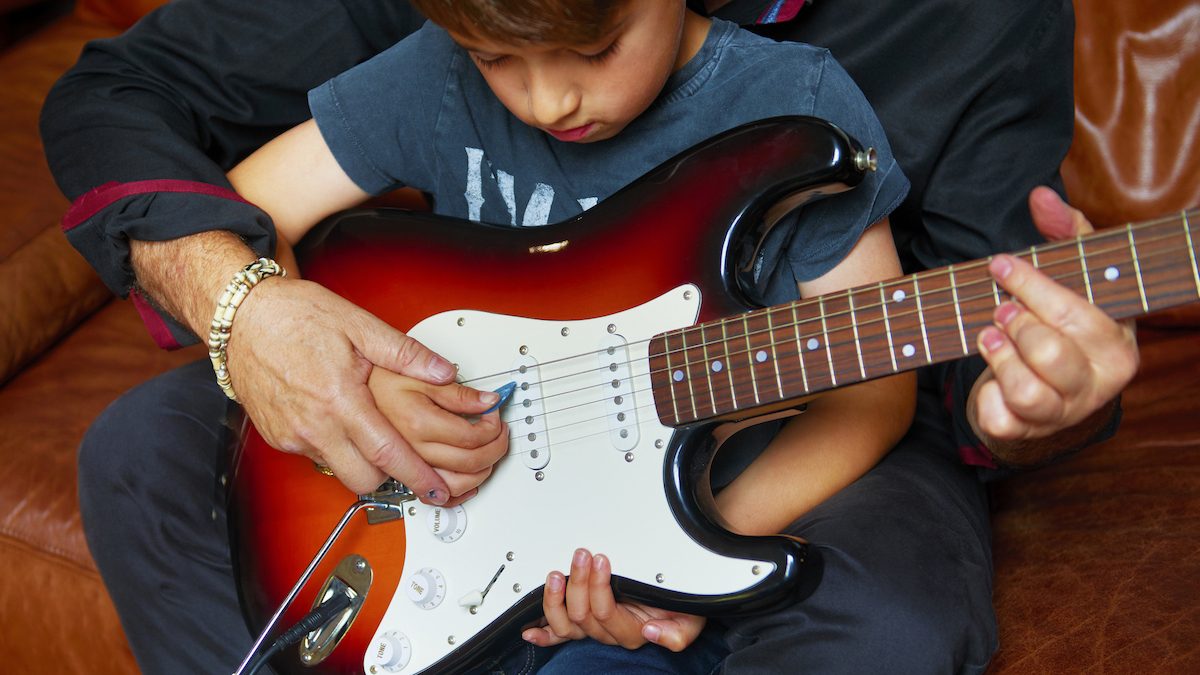
Shouldn’t I start on acoustic guitar before electric?
“You should start on acoustic guitar before moving on to electric” is something that you’ll often hear when talking about picking up the guitar for their first time. The truth is - you should start on whichever one you want.
Standard tuning is the same for both acoustic and electric, so chords and scales will work in exactly the same way. Electric guitars usually come strung with slightly lighter strings than acoustic, so if anything, it will be slightly easier to play. If you’re drawn to an electric guitar more than an acoustic, then that’s the way to go - it’s you that’s going to be playing it after all!
How much should you spend on a beginner electric guitar?
You can trust Guitar Player.
How much you should spend on a beginner electric guitar really depends on your situation. If you have never picked up a guitar in your life, look to spend around $200. This will get you a solid guitar that will stay in tune, feel comfortable and have a playable action. The Jet JS-400 is the epitome of a brilliant electric guitar at this price range. If you spend any less than this, you run the risk of getting a guitar that will do more harm than good and potentially have a high action, bad tuning stability and poor intonation.
On the other hand, if you’ve been playing for a few months, you may want to up that budget a bit. Currently, the PRS SE CE 24 Standard Satin is below $500. This guitar will get you well into the intermediate level of playing and, although you may want something fancier as you progress, its quality of materials and versatility means that it can stick with you for life. Also, the upside of spending more can be a more enjoyable learning experience. A guitar around the $500 mark will play much smoother, sound better amplified and will generally last longer due to better quality materials. The quality of craftsmanship is instantly noticeable, even if you’ve never held a guitar before.
What scale length should my beginner electric guitar have?
Younger kids with shorter arms or those who are smaller may find a shorter scale length beneficial. Anything under the 24” mark is generally considered 'short scale' and is worth considering if you fall into either of these categories. A short-scale guitar has a shorter distance between the nut and the string saddles compared to a full-scale length. This difference brings a few advantages: the frets are closer together, which is ideal for little hands moving from note to note; the strings are slinkier, providing a good starting point for building finger strength and practicing techniques like string bending; and with less tension, fingering chords will be less resistant.
What about body style?
It’s wise to consider the shape and size of the body when looking for the best beginner electric guitar. Something with a narrow waist and thin body might be ideal for players of a smaller stature. Remember, the guitar is quite a physical thing, and you need to be able to stand or sit with it comfortably. Getting something that’s hard to play might work against you and could put you off playing.
What pickups should I go with on my beginner electric guitar?
What pickups you have on an electric guitar is the most important aspect to your guitar’s tone. Unlike acoustic guitars where body shape and tonewood plays an incredibly important factor, an electric's pickups have the most influential effect on how your guitar actually sounds when amplified. Pickups are essentially magnets, wrapped with copper wire which creates a magnetic field that, when disrupted by a moving string, creates a signal that is amplified by your guitar amp to create sound.
The two most common pickups found on electric guitars are single coils, found on Telecasters and Stratocasters, and humbuckers, found on SGs and Les Pauls. Both have tonal differences that will appeal to different tastes. Single coils tend to sound much brighter, spankier and thinner than humbuckers. Single coils offer less output and are great for country, pop, funk and indie. Humbuckers offer much more output, and often sound warmer and meatier than single coils. Since humbuckers distort much more quickly, they are the perfect companion to heavier music such as rock and metal.
Although each pickup's characteristics are traditionally found in the genres mentioned above, this isn’t a hard and fast rule. Think of these points as general guidelines and, chances are, the more familiar you get with each, the more you’ll develop your own personal tastes. For a beginner electric guitar, an HSS pickup configuration is often considered the optimal choice. HSS stands for 'humbucker, single coil, single coil', where the humbucker pickup is found in the bridge position. This configuration provides exceptional versatility and a blend of different tones.
How we test
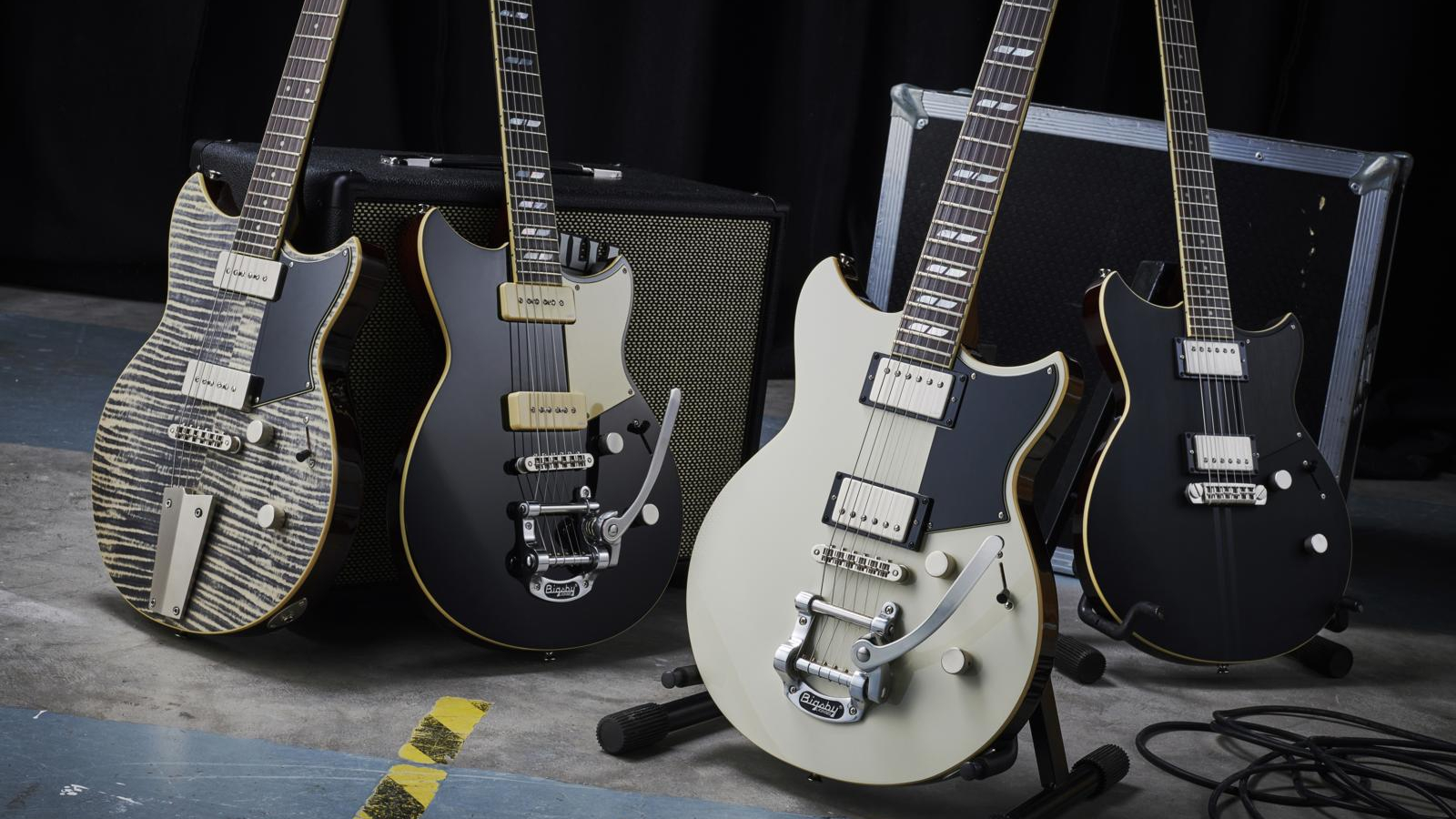
At Guitar Player, our team of writers aren't just music enthusiasts; we're real-life musicians. Our hands-on experience with acoustic guitars ensures that our reviews and recommendations are backed by practical knowledge and real-world testing.
When it comes to selecting the best beginner electric guitars, we leave no stone unturned. Meticulously evaluating factors like tonal versatility, sonic character, build quality, and value for money, it's only after rigorous testing in a variety of playing scenarios do we choose products for our guides. We stand by our selections, ensuring that every set of strings we recommend is one we'd use ourselves.
Read more on how we test gear and service at Guitar Player.
- Unplug with the best acoustic guitars for beginners
All the latest guitar news, interviews, lessons, reviews, deals and more, direct to your inbox!
Ross has been a music lover and guitar player since the age of 8. He has spent the five years since graduating from university working in music retail, selling guitars, amps and more. Ross is particularly interested in electric guitars, pedals and amplifiers and his current rig includes a trusty 2009 American Standard Stratocaster and Vox AC30S1 with a few Walrus Audio and Way Huge pedals in between. He currently writes for Guitar Player and Guitar World.

